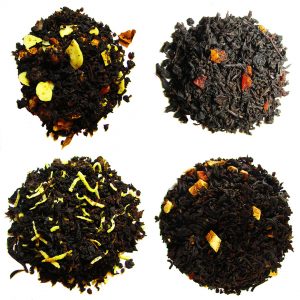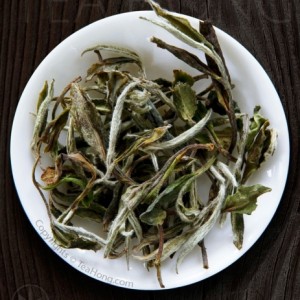New Developments in Using Tea Catechins to Fight Cancer
Regarding the fight against cancer, EGCG, for sure, is the most promising substance present in tea, especially green and white teas. Here, it accounts for more than half the total content of catechins. It is known as a “phytochemical”, a variety of substances coming from a plant source showing pharmacological activity in vitro, ie it can be extracted from the plant and studied in a laboratory as a possible future drug.
There are a lot of current studies on such substances, and EGCG is a focus in thousands of scientific publications since it was first discovered and isolated.
However, using tea clinically is a difficult task (1). The biggest of these difficulties comes from the chemical nature of EGCG itself.
Making EGCG easily absorbable
The molecule of EGCG is very big and hydrophilic, two characteristics that would make a scientist think that it cannot be completely absorbed by the gut (1, 2, 3, 4). It mainly accumulates in the gastrointestinal tract, so flattening the potential effects it would exert on other organs of our body.
A substance is hydrophilic when it is only dissolvable in water. The opposite of that is lipophilic, only dissolvable in oil. In between, there are substances dissolvable in both liquids. To be easily absorbed by the gut, substances must have a bit of both characteristics (such as caffeine).
To overcome this problem, two main strategies are now under investigation: proEGCG (1) and methylated ECG (3,4,5-trimethoxyECG) (4). Basically, by chemical modifying the natural phytochemicals found in tea, EGCG and other tea polyphenols can be made less hydrophilic, thus allowing a better absorption through the gut into the blood and a better cancer penetrating effect.
How does a scientist “methylate” something?
Basically he/she breaks it down so to have a smaller molecule still showing the same activity. You obtain ECG — epicatechin galate (changing from epigallocatechin galate, ie EGCG). Now, she decreases its hydrophilicity by simply attaching some “hydrophobic” particles to it (ie methylation, in the fashion of particles in the methyl groups), but still without affecting its properties. At the end of this long and sweaty try-and-error job, methylated ECG is the result.
Although there are a lot of studies trying to define the precise molecular mechanism on a foundation of the well documented cancer fighting property of tea, a study in Spain observed that methylated ECG seems to inhibits dihydrofolate reductase (an enzyme highly expressed in cancer cells, needed to sustain their fast DNA production) more efficiently than the natural molecule (4). This has been found out by chance, but generally speaking, chemical optimization by such “lead compounds” can increase the activity of the natural molecule for a particular target through chemical modifications. So this is one direction for recent researches on tea phytochemicals (1).
Pro-EGCG, a way of taking EGCG to where it is needed
Coming back to chemical modifications, now imagine attaching some hydrophobic parts to EGCG in a way to make it inactive, but reverting such modifications by metabolism just after absorption. It is the case of proEGCG: what in pharmacology is called a “prodrug”, that is a chemical precursor of a drug, ie, a substance from which another one is produced, simply by metabolism. The prodrug shows better body distribution properties and selectivity for its target than the drug itself. This is then converted to the “drug” naturally through the actions of cellular enzymes. In this way, proEGCG achieves higher blood concentration than the natural molecule and, once in cancer cells, it again becomes EGCG, ready to exert its activity. Thanks to this trick, we can overcome the bad distribution properties of some catechins (especially EGCG), without giving up their promising health benefits.
Synergy: All the Phytochemicals of the Tea Plant
Yet a third strategy designed to study the potential tea health benefits for patients of cancer (and other diseases) is to standardize tea catechins in a mixture of well defined quantities, so that the patient can have just in a pill a constant dose of catechins at regular time intervals: two parameters that must be carefully controlled in cancer chemotherapy. As EGCG is not the lone phytochemical contained in the Camellia sinensis plant, the beneficial effects of tea are thought to be experienced by the body exposure to the whole mixture of tea plant phytochemicals. Such green tea catechins mixture is now called “Polyphenon E” (5) and it takes advantage of the combination of all the most important catechins contained in green tea, in a way to have additional benefits from their synergic activities.
Nature’s way
As one should have noticed, nature is such a great reservoir of powerful drugs that pharmaceutical chemists are really interested in getting ideas from it.
The plant, on the other hand, is instead more interested in producing molecules for itself than for us — for protection from the sun (as flavonoids), radicals (as catechins), pathogens and predators (as alkaloids*). Particularly, pathogens (viruses, bacteria and fungi) and predators represent a big threat for plants during evolution, as a plant doesn’t have an immune system or feet to escape. These threats press them to evolve defensive systems as they are in a real chemical warfare, producing very effective antibiotics, signaling molecules (in order to host antibiotics-producing bacteria), and poisons.
Currently in pharmacology, there are remarkable efforts trying to rationalize the health benefits experienced by people using natural remedies not recognized by scientific medicine: understanding the molecular mechanisms at the root of such therapies would help scientists to potentiate their effectiveness, and to recognize the effective drug and its mode of use for a particular disease, so to bring such source of health, as tea is, in the common clinical practice. So we hope.













